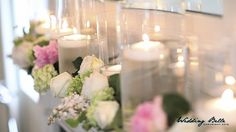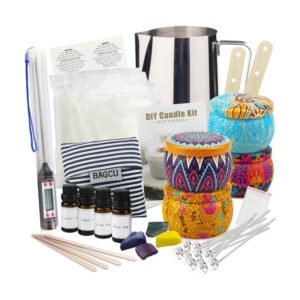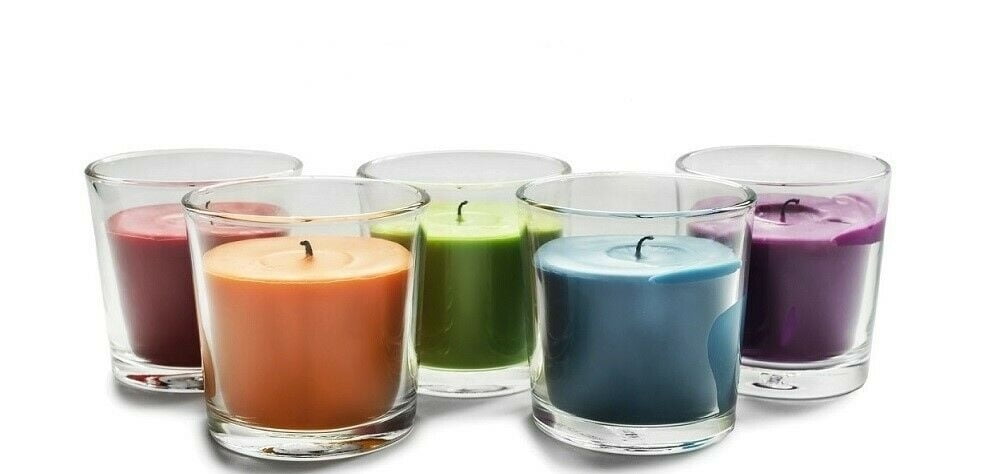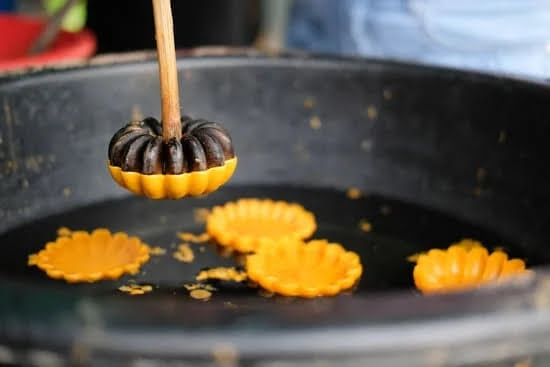Candle making color guide is an essential tool for any candle maker looking to add a pop of color and creativity to their creations. Whether you are a beginner or a seasoned pro, understanding how to choose the right colors for your candles can make a significant impact on the final product. From creating soothing pastel tones to vibrant, eye-catching hues, the possibilities are endless with the right color guide.
When it comes to candle making, selecting the perfect colors goes beyond just personal preference. The hues you choose can evoke different emotions, set the mood for a room, or even match a specific theme or occasion.
Understanding color theory and how different shades interact with each other can help you achieve the desired result in your candle-making projects. By mastering the art of color mixing and matching, you can take your candles to the next level and stand out from the crowd.
In this comprehensive guide, we will delve into various aspects of candle coloring, including different types of wax dyes and pigments available, tips for achieving consistent color results, safety precautions when working with dyes and pigments, and top 10 color combinations to try for various occasions. Whether you’re looking to create calming candles for relaxation or bold statement pieces for special events, this color guide will enhance your candle-making skills and inspire you to get creative with colors.
Importance of Choosing the Right Colors for Your Candles
Color plays a significant role in the overall aesthetic appeal of candles. The choice of colors can convey different moods, evoke emotions, and even act as a reflection of your personal style. When crafting candles, selecting the right colors is crucial to ensuring that your finished products align with the intended theme or purpose. This is where a comprehensive candle making color guide becomes essential.
Using the appropriate colors in your candles can enhance their visual impact and make them more appealing to potential customers or recipients. For example, warm tones like reds, oranges, and yellows are often associated with energy and passion, making them ideal choices for romantic or festive candles. On the other hand, cool tones such as blues and greens can create a calming atmosphere, perfect for relaxation or meditation candles.
In addition to understanding the emotional impact of colors, it is also important to consider practical factors when choosing colorants for your candles. Different types of wax dyes and pigments have unique properties that can affect the final appearance of your candles.
Some colorants may produce vibrant shades, while others result in more subtle hues. By learning about these variations and experimenting with color mixing techniques, you can expand your creative possibilities and achieve the perfect color combinations for your candle making projects.
| Colors | Associated Meanings |
|---|---|
| Red | Energy, Passion |
| Blue | Calmness, Serenity |
| Green | Nature, Growth |
Understanding Color Theory in Candle Making
Color theory plays a crucial role in the art of candle making, as it helps determine the overall aesthetic appeal of your candles. By understanding how colors interact with each other, you can create visually appealing and harmonious designs that are sure to delight your customers or recipients. Whether you prefer vibrant hues or subtle pastels, knowing the basics of color theory will elevate your candle making projects to the next level.
One fundamental concept of color theory is the color wheel, which consists of primary colors (red, blue, yellow), secondary colors (orange, green, purple), and tertiary colors (red-orange, yellow-green, blue-purple). Complementary colors are positioned opposite each other on the wheel and when combined, they create a striking contrast. On the other hand, analogous colors are located next to each other and blend seamlessly for a cohesive look.
When selecting colors for your candles, consider the significance of color psychology. Different colors evoke varied emotions and associations – for instance, red symbolizes passion and energy, while blue conveys tranquility and calmness. By incorporating specific colors into your candle creations, you can convey intended moods or messages to those who receive them. Experimenting with different combinations based on color theory principles can lead to stunning results that set your candles apart from the rest.
| Color Type | Description |
|---|---|
| Primary Colors | Cannot be created by mixing other colors; foundational hues in color theory. |
| Complementary Colors | Located opposite each other on the color wheel; create contrast when combined. |
| Analogous Colors | Adjacent on the color wheel; blend harmoniously for a unified look. |
Different Types of Wax Dyes and Pigments for Coloring Candles
When it comes to adding color to your candles, there are various options available in the market. From traditional wax dyes to modern pigments, choosing the right type of coloring agent can significantly impact the final look of your candles. Understanding the different types of wax dyes and pigments for coloring candles is essential for achieving your desired results.
Wax Dyes
Wax dyes are one of the most common choices for coloring candles. These dyes are specially formulated to be used in candle making and are available in liquid or chip form. Liquid wax dyes are easy to use and mix well with melted wax, while dye chips provide more concentrated colors. Wax dyes come in a wide range of shades, allowing candle makers to easily achieve vibrant and consistent colors in their creations.
Pigments
Pigments are another popular choice for coloring candles, especially for those looking to create unique and custom shades. Pigments are fine powders that can be mixed with melted wax to create rich, opaque colors. Unlike wax dyes, pigments offer more versatility in color mixing and can be used to achieve pastel tones or deep hues. However, working with pigments may require a bit more experimentation to get the desired color intensity and consistency in your candles.
With a variety of options available, including liquid wax dyes, dye chips, and pigments, candle makers have the flexibility to experiment with different color combinations and techniques. Whether you prefer bright and bold colors or soft and subtle hues, choosing the right type of wax dye or pigment is crucial for creating stunning candles that reflect your personal style and creativity.
Experimenting with different types of coloring agents can help you expand your skills as a candle maker and elevate the overall aesthetic appeal of your handcrafted creations.
How to Mix Colors to Create Unique and Custom Shades for Your Candles
Color mixing in candle making is an exciting way to create unique and custom shades for your candles. By experimenting with different combinations of wax dyes and pigments, you can achieve a wide range of colors to suit your preferences or match specific themes or occasions. Here are some tips on how to mix colors effectively in candle making:
Start With Primary Colors
When it comes to color mixing, it’s essential to understand the basics of primary colors: red, blue, and yellow. These colors can be mixed together in various proportions to create secondary colors like orange, green, and purple. By starting with the primary colors, you can have more control over the final shade you want to achieve.
Use a Color Wheel for Guidance
A color wheel is a useful tool that can help you determine which colors work well together and how they interact when mixed. Complementary colors are located opposite each other on the color wheel and can be combined to create neutral tones or vibrant contrasts. Analogous colors are next to each other on the wheel and produce harmonious blends when mixed.
Experiment With Different Ratios
Don’t be afraid to experiment with different ratios of colorants to create unique shades for your candles. Start by adding small amounts of dye or pigment to your melted wax and gradually increase the intensity until you achieve the desired color. Keep track of the ratios you use so that you can replicate successful mixes in the future.
By mastering the art of color mixing in candle making, you can elevate your creations and offer a wider range of options to your customers or loved ones. Whether you prefer subtle pastels or bold hues, understanding how to mix colors effectively will enable you to unleash your creativity and craft candles that stand out from the rest.
Experiment with different combinations, keep notes on successful mixes, and enjoy the process of creating custom shades for your candles using this candle making color guide as your inspiration.
Tips and Tricks for Achieving Consistent Color Results in Candle Making
When it comes to creating candles, achieving consistent color results is essential for producing high-quality and visually appealing products. Whether you are a beginner or experienced candle maker, here are some tips and tricks to help you achieve uniform and vibrant colors in your candles:
- Use a digital scale: To ensure accurate measurements of dyes and pigments, invest in a digital scale. This will help you achieve precise color ratios and avoid inconsistencies in your candle batches.
- Mix dyes thoroughly: When adding colorants to your wax, make sure to mix them thoroughly to distribute the color evenly. Uneven distribution can result in blotchy or streaky candles.
- Test colors before pouring: Before pouring your colored wax into molds, conduct a small test batch to see how the color looks once the candle has fully set. This allows you to adjust the color intensity if needed.
In addition to these tips, maintaining a detailed record of the color mixes used for each batch can also help in achieving consistent results. By keeping track of the specific dye combinations and ratios that produce your desired shades, you can replicate successful colors with ease.
Safety Precautions When Working With Candle Dyes and Pigments
When working with candle dyes and pigments, it is crucial to prioritize safety measures to protect yourself and others from potential hazards. Here are some safety precautions to keep in mind:
- Wear protective gear: When handling dyes and pigments, wear gloves, goggles, and an apron to prevent skin contact or accidental splashes.
- Avoid inhaling fumes: Some dyes may emit fumes when heated, so it is important to work in a well-ventilated area or wear a mask if necessary.
- Store dyes properly: Keep your dyes and pigments away from heat sources or open flames to prevent accidents. Store them in a cool, dry place out of reach of children and pets.
By following these safety precautions and implementing the tips mentioned earlier, you can enhance your candle making skills and consistently achieve beautiful and colorful candles for any occasion. Experimenting with different color combinations will allow you to unleash your creativity while ensuring that each candle you create is visually stunning.
Safety Precautions When Working With Candle Dyes and Pigments
When working with candle dyes and pigments, it is crucial to prioritize safety to prevent any accidents or health risks. Here are some essential safety precautions to keep in mind:
- Use protective gear: Always wear gloves, goggles, and a mask when handling candle dyes and pigments to avoid any direct contact with your skin, eyes, or respiratory system.
- Work in a well-ventilated area: Make sure your workspace has proper ventilation to minimize exposure to fumes from melting dyes and pigments. Consider using a respirator if needed.
- Keep materials separate: Store candle dyes and pigments away from food items and other household products to prevent accidental ingestion or contamination.
In addition to these precautions, it is important to follow the manufacturer’s instructions for each dye or pigment you use in your candle making process. Some dyes may require specific handling procedures or have limitations on their use with certain types of wax.
When melting dyes or pigments, always use a double boiler or dedicated melting pot to avoid direct heat exposure that can cause them to ignite. Never leave melting dyes unattended, and keep a fire extinguisher nearby just in case. By taking these safety measures seriously, you can enjoy the creative process of candle making without compromising your well-being.
Remember that being cautious when working with candle dyes and pigments not only protects you but also ensures the quality of your candles. Prioritizing safety will allow you to focus on perfecting your color combinations and creating beautiful candles that bring joy to yourself and others.
Top 10 Candle Making Color Combinations to Try for Various Occasions
Creating beautiful and unique candles involves not only choosing the right scents but also selecting the perfect colors to match the occasion. The candle making color guide plays a vital role in helping crafters achieve their desired results. By understanding color theory and experimenting with different combinations, you can create stunning candles that are perfect for any event or mood.
When it comes to selecting colors for your candles, consider the message or feeling you want to convey. For example, warm tones like reds, oranges, and yellows are great for creating a cozy and inviting atmosphere, perfect for holiday gatherings or romantic evenings. On the other hand, cool tones like blues, greens, and purples can evoke feelings of calmness and relaxation, ideal for spa nights or meditation practices.
Combining different colors can elevate your candle-making game even further. Some popular color combinations to try include pastel hues like pink and mint green for baby showers or gender reveal parties, earthy tones like brown and green for nature-inspired events, or striking contrasts like black and gold for elegant dinner parties. Experimenting with these combinations can help you discover new possibilities and unleash your creativity with the candle making color guide.
Conclusion
In conclusion, mastering the art of candle making color guide is essential for enhancing your skills in creating beautiful and unique candles. Choosing the right colors for your candles can truly elevate the aesthetic appeal and emotional impact of your creations. By understanding color theory and experimenting with different types of wax dyes and pigments, you can unlock endless possibilities for creating custom shades that reflect your personal style and creativity.
Mixing colors to achieve unique combinations is not only a fun and rewarding process but also allows you to add your personal touch to each candle you make. With the right tips and tricks, you can ensure consistent color results in every batch of candles you produce. It is important to follow safety precautions when working with candle dyes and pigments to protect yourself and others from potential hazards.
To further inspire your candle making journey, consider trying out some of the top 10 candle making color combinations recommended for various occasions. Whether you are creating candles for relaxation, romance, celebration, or simply as gifts, these color combinations can help set the mood and create unforgettable experiences for yourself and others. Remember that with the perfect candle making color guide at hand, the possibilities are endless in turning simple candles into works of art.
Frequently Asked Questions
Which Colors Are Used for Candle Making?
Candle making involves a wide range of colors depending on personal preference and the desired outcome. Common colors used for candle making include red, blue, green, yellow, purple, orange, and pink. Some candle makers even combine different colors to create unique and customized hues.
What Color Candle Sells Best?
The best-selling color for candles can vary depending on trends, seasons, and consumer preferences. However, classic colors like white and ivory tend to sell well year-round as they are versatile and can complement any decor or occasion. Additionally, warm and calming colors like soft blues, greens, and lavender often attract buyers looking for relaxation or stress relief.
How Do You Calculate Candle Dye?
Calculating candle dye amounts requires precision to achieve the desired color intensity without affecting the candle’s burning characteristics. Most candle dye manufacturers provide guidelines on how much dye to use based on the amount of wax being colored.
Generally, it’s recommended to start with a small amount of dye and gradually increase until the desired shade is achieved through experimentation and careful observation of the color development during the melting process.

Welcome to my candle making blog! In this blog, I will be sharing my tips and tricks for making candles. I will also be sharing some of my favorite recipes.





